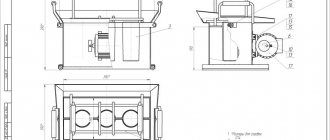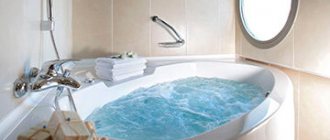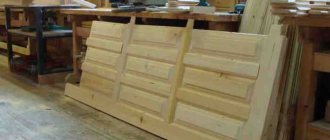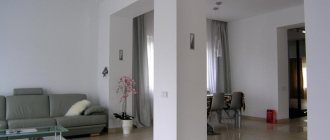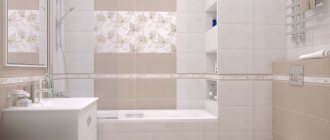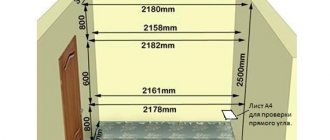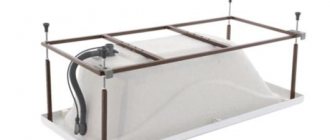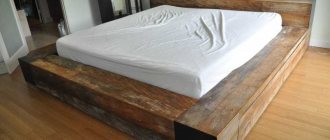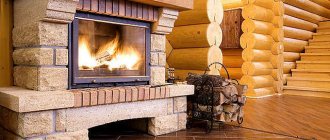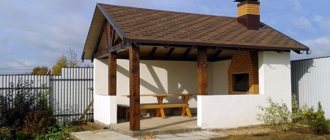It is known that in the simplest classification, all fireplaces are divided into open and closed type devices. In addition to various technical nuances, the main distinguishing feature is the door for the fireplace. To emphasize its functional purpose, we will conduct a comparative analysis of some features of the operation of fireplaces of two different types.
Closed fireplaces are always associated with steel or cast iron models, which implement new technologies for the efficient use of released energy. But, despite this, classic fireplaces with an open firebox are not inferior to their popularity and occupy a certain niche among their consumers.
In addition, such a fireplace design provides some distinctive advantages. First of all, it is a living flame, which you can observe directly, admiring the magical dances of the tongues of fire.
Stove store assortment
The fireplace is a source of heat and it doesn’t matter how much of it is used to heat the room. Heat from the open structure is released using infrared radiation. This energy is believed to be more useful than heat from convection movement. Open fire can be adapted for additional purposes. They cook food on it by modernizing the fireplace design, and not the least important distinctive advantage is that an open fireplace can quickly warm up the owner who comes in from the street.
Naturally, such a fireplace has a lot of disadvantages, which are used by designers of closed types of fireplaces. The efficiency of a fireplace with an open hearth is slightly more than 20%. With such heat output, you cannot rely on a fireplace as a serious source of heat. Even during operation, the device is not capable of storing energy. This means that immediately after the wood burns out, the fireplace will stop heating the room. The low degree of fire protection should not be overlooked, especially when children are present. Sparks from firewood often fly outside the firebox and can cause trouble.
Finished design
How to make glass from sand
Most likely, you know that sand is needed to make glass, and indeed, it is the most important ingredient. To make a glass product transparent, quartz sand without metal impurities is used, which gives the material colored shades.
To make glass you will need siliceous sand, otherwise called quartz.
Since quartz sand has a melting point of 2300⁰C, components are needed that will help reduce it in order to make the manufacturing process easier and more affordable. Such an ingredient was sodium carbonate or ordinary soda ash, thanks to which the smelting temperature was reduced by almost half.
Baking soda (sodium carbonate) lowers the temperature required to produce glass sheets.
Soda makes glass water-permeable, which makes it impractical in everyday life and in production. To give the material strength, calcium oxide or lime is added to the alloy. Additionally, the composition may contain magnesium or aluminum oxides for maximum resistance to physical and chemical factors.
To produce thin decorative glass, such as crystal, lead oxide is used as an additive, which gives the products shine and fragility. Lanthanum oxide is commonly present in eyeglass lenses due to its ability to refract light rays.
The most commonly used additive in the production of decorative glass is lead oxide, which adds shine.
Sapphire glass for glasses is made with the addition of aluminum oxide, which makes it maximum hard and resistant to physical damage. To make colored glass, iron oxide is added to the alloy to produce red, nickel for brown and purple tints, copper and chromium for green, cobalt for blue and other metals.
In production, glass is made in several stages: first, the key components are melted together in a furnace to form a homogeneous alloy, then sent to a container made of tin, which does not mix with the glass, maintaining its homogeneity. Already at this stage, the glass gradually cools, becomes smooth and thin.
To obtain a homogeneous mass, it is necessary to remove the bubbles - to obtain this effect, glassmakers constantly stir until the molten glass mass thickens.
The alloy cools completely when moving along a conveyor, the length of which can reach 100 m; this is necessary to prevent the formation of excess pressure inside the alloy, which can lead to future defects. After the conveyor, the glass is further processed to create various products.
Glasses differ only in the constituent material used for manufacturing. But the process itself is almost the same.
Construction of a chimney in a house made of aerated concrete
A fireplace in the home is the dream of many homeowners. It is better to think about building a fireplace at the design stage. It is possible to build a fireplace into a finished and used house, but it is very troublesome and expensive. When building a house from aerated concrete blocks, making a fireplace and a chimney for it is not at all difficult if you approach it responsibly, choose the right materials, calculate the size and follow the fireplace masonry technology. As a result, you will receive a perfectly functioning fireplace that will last for decades and provide warmth and comfort.
What is a chimney and why is it needed?
A chimney in a house made of aerated concrete is a structural element of the heating system that ensures the proper functioning of the stove or fireplace. The main task of a chimney is to effectively remove combustion products from the room to the street.
The design and installation of a chimney for a fireplace in a house made of aerated concrete is regulated by SNiP III-G.11-62. The regulatory document establishes the following requirements for smoke removal :
- The minimum length of the chimney is 5 m.
- The cross-section of the pipe is determined by calculation.
- Each fireplace, stove or boiler requires a separate duct.
- The speed of flowing air inside the channel is 15-20 m/sec.
- The maximum number of channel turns is 3.
Depending on the design and time of construction, a chimney for a fireplace in a house made of aerated concrete can be:
- Internal. It is installed inside a wall made of aerated blocks and passes through all ceilings. It is carried out at the stage of building a house during the construction of the “box”. In this case, the fireplace not only performs an aesthetic function, but also heats the home.
- External. The smoke exhaust duct, except for the initial section, is located outside the house parallel to one of the load-bearing walls. This method of installing a chimney is used when the owners of an existing residential building decide to make a fireplace.
Smoke exhaust ducts in a house made of aerated concrete blocks can be of different heights, configurations, and cross-sections. But for all structures there are three basic requirements: fire resistance, creation of normal draft, prevention of the formation or penetration of moisture into the chimney.
Is it possible to use aerated concrete to build a fireplace and chimney?
Aerated concrete is a non-flammable, but not fire-resistant material, so its use for fireplaces and chimneys is limited and has its own nuances. You cannot use gas blocks for laying a fireplace insert and a smoke exhaust duct. But aerated concrete, due to its fire resistance and thermal conductivity, is excellent for laying the side walls of a fireplace. In this case, aerated concrete blocks can replace traditional ceramic bricks, and even have a number of advantages in comparison with them:
- high thermal conductivity - the fireplace will release maximum heat into the room;
- ease of laying - aerated concrete blocks are laid much faster and easier than bricks;
- low price - 1 m³ of aerated concrete blocks is 30% cheaper than brick.
Aerated concrete blocks are easy to cut, so the fireplace can have any shape, which is difficult to achieve when using ceramic bricks.
Why can’t I use standard aerated concrete blocks D300-D600 for laying a chimney? There are several reasons:
- The coefficient of thermal expansion at a temperature of +400°C and above for aerated concrete is 1.6 times greater than that of brick. Temperature changes will destroy the structure of the aerated block , which will lead to a decrease in strength, the formation of cracks, and the passage of smoke into the room.
- Humidity shrinkage more than 5%. With a sharp rise in temperature, and this is inevitable when lighting a fireplace, the shrinkage of the blocks reaches 5%. As a result, the seams in the masonry increase, it loses strength and collapses.
When can a gas block be used for a chimney?
Still, a chimney can be made from aerated concrete in two cases:
- The masonry is made from standard blocks with a density of at least D600, and then the finished channel is thermally and waterproofed and lined with stainless steel or tempered fire-resistant glass. The option can be considered purely theoretical, not only because of the difficulty of installation, but also the high cost of such a design.
- The masonry is made from special O- aerated concrete blocks designed specifically for the construction of ventilation and smoke removal ducts. O-blocks do not require additional sleeves and are easily built into a wall made of aerated blocks . The price of O-blocks is quite high.
How to make a chimney: step-by-step instructions
The main requirement for a chimney in a wall made of aerated concrete is fire safety. To ensure this, you need to choose the right material and calculate the cross-section of the smoke exhaust duct. Step-by-step instructions for installing an effective and safe brick chimney for a fireplace in a house made of aerated concrete:
Selecting materials
Although aerated concrete is superior to ceramic brick in all respects, it is better to make a chimney in a house made of aerated concrete bricks from brick. The material has excellent fire resistance, durability, and moisture resistance . The disadvantages of brick include its roughness: soot settles on the walls of the channel and the chimney needs regular cleaning to maintain normal draft.
The following types of bricks are suitable for fireplace chimneys:
- ShKU - fireclay fireproof. Withstands temperature changes from -50°C to +900°C. This is the best choice for houses located in the northern regions of Russia.
- ША or ШБ - fireclay with fire resistance class A or B. Withstands temperatures up to +1400°C.
- M - red brick grade M75. M200. Also suitable for the construction of chimneys, can withstand temperatures up to +500°C.
The masonry is not done with ordinary cement-sand mortar, but with sand-clay mortar. Clay has a linear expansion coefficient that is as close as possible to the parameters of ceramic bricks. The ratio of clay to sand is 1:3 or 1:4 depending on its chemical composition. To simplify masonry work, you can use special glue for fireplaces. Sealants used for processing seams and fastening waterproofing and thermal insulation must have an operating temperature of at least +500°C.
Drawing and masonry diagrams
The chimney in a house made of aerated concrete can be located in any of the load-bearing walls. In this case, it is necessary to comply with fire safety standards:
- there must be a distance of at least 15 cm between the roof and the chimney;
- the fluff (expansion in the attic area) should end at least 8 cm from the ceiling;
- The minimum distance of the channel to structures made of combustible materials is at least 50 cm.
How to make glass at home with your own hands
To make glass at home, you will need a special furnace that provides heating to high temperatures. At home, they use a muffle, electric or pot stove, as well as a charcoal roaster.
Special glasses can be melted in an electric, pot or muffle furnace.
The second option is simpler, but unsafe, since when heated to hypermaximum temperatures, the grill itself may melt. We will tell you how to cook glass in a special oven.
- Prepare a fireproof crucible (melting pot).
- Pour sand, soda and lime into the crucible, and impurities should occupy no more than 30% of the composition.
- Place the crucible in the oven and melt the composition at the highest possible temperature (1500-1700⁰C).
- Once the components are melted, pour the liquid alloy into the casting molds.
- The last stage is firing in a kiln cooled to 400-600⁰C. This will make the glass product hard and durable.
The crucible must withstand the exceptionally high temperature that is reached in the furnace.
This is how you can prepare glass at home if you have special equipment.
Important! When working, follow safety precautions: use a welding mask, heat-resistant gloves, and do not go close to the furnace.
Imitation of wood in the interior of an apartment
A wood fireplace will look great in the interior of an apartment. With this type of imitation, decoration and furniture made from natural materials predominate, which has a positive effect on Feng Shui. You can raise the texture of wood using stain and varnish. In addition, if the situation in the apartment changes, the portal can be finished with almost any facing material.
To work you will need:
- roulette;
- electric jigsaw;
- plane;
- belt grinder;
- building level;
- screwdriver;
- hammer;
- screws and nails without heads;
- straight or rounded lining;
- timber 25×25 mm.
Before starting work, the lining must be treated with an antiseptic.
Assembly is carried out in the following sequence:
- Blanks are cut from timber. The frame is assembled using nails and screws for fastening.
- The frame is covered with clapboard. The portal is ground and polished. After this, the fireplace is cleaned of shavings and sawdust.
- The wood is coated with varnish or water-based paint. To achieve the desired effect, this procedure is performed 2-3 times.
During operation, decorative shelves and other accessories can be screwed to the portal.
Watch the video on how you can create a home decorative fireplace using ordinary boards
Aerated concrete is a suitable masonry material for a fireplace, but with some restrictions: for example, it cannot be used to construct a firebox. Aerated concrete is used as a load-bearing and finishing material, and as thermal insulation of the side walls of the firebox. The advantage of aerated concrete over brick is its low price and high speed of work. However, if you do the work yourself, you need to know the features that will allow you to save money, but not lose quality.
What is this article about?
Types of fireplace doors
Product classification depends on what material the doors are made of. There are several types with their own positive and negative qualities, features of operation and installation.
Glass doors for fireplace
A fireplace door with glass is an excellent solution that suits different interior styles. Fireplace heat-resistant glass is resistant to high temperatures and has increased strength. The thermal expansion of the material is insignificant - the coefficient is 30 times less when compared with ordinary glass. Due to their high heat transfer, they are able to withstand heating up to +1000 degrees Celsius, without cracking.
After 30 minutes of operation of the fireplace, the heating of the glass will be within +50-250 degrees Celsius. For hardened products, the temperature reaches up to +500 degrees.
Heat-resistant glass is made from special raw materials using special equipment, practically without the use of foreign impurities. The material is resistant to fire thanks to a special hardening technology; in addition, it is chemically treated and thermally polished.
How to use the fireplace?
Before lighting the wood, you should slightly warm up the column of cold air in the chimney. To do this, a lit torch is inserted through the firebox into the chimney channel for a few seconds. In this case, a primary draft is formed in the pipe channel, and the fireplace will not smoke when melted.
Various combustible materials are used as fuel for the fireplace: firewood, coal, specialized briquettes. For central Russia, the most affordable type of fuel is firewood. In addition, neatly sawn logs serve as a good decorative addition to the fireplace.
Unlike a stove, a fireplace is more “demanding” when it comes to choosing firewood. It is not recommended to use pine or spruce wood to fire an open fireplace. Resinous coniferous wood “shoots” when burned. In this case, sparks and burning coals may fly out of the firebox. The most preferred firewood is from deciduous wood - birch, aspen and alder. Birch has dense wood, which when burned produces an even, hot flame. At the same time, when burning birch wood, a large amount of soot is formed, which settles in the chimney. Aspen and alder, being inferior to birch in terms of heat transfer, promote the combustion of soot, which reduces contamination of the pipe channel. Therefore, the fireplace should be heated with a mixture of birch and aspen (or alder) firewood. This will reduce the risk of fire and increase the intervals between chimney cleanings.
Where is heat-resistant glass used?
Heat-resistant glass allows you to be close to fire without fear of flying sparks.
Fireplace
Heat-resistant glass for the fireplace keeps the fire open and increases safety of use.
Oven
Transparent oven and microwave doors allow you to maintain the temperature and monitor the cooking process.
Hob
Uniform distribution of heating of the hob.
Production
Fire-resistant glass in doors and partitions reduces the likelihood of a fire occurring and spreading.
Masonry
A foam concrete slab with a base height of no more than 10 cm is laid on the floor using glue. Vertical blocks for the sides are installed; for a wider structure, foam blocks should be laid horizontally. The block is easy to saw, so it can be sawed into bricks, you will get an imitation of brickwork, the parts can be fastened with the same glue, or a mixture of sand and cement. After installing the side walls, a block slab is glued on top, which will serve as the top shelf, the frame structure is ready. If the space for the firebox is too large, then the front part is cut out of a plywood sheet, also a window to fit the size of your firebox, the vault can be made into an arch or simply flat. Tile sheets, like blocks, are also seated with glue; for the front panel, you can use corrugation, coat it well with glue and apply putty, coat the entire surface with it, especially the seams and joints. Using a spatula, the composition is placed on the trowel and then a layer of putty is applied from bottom to top, leave the first applied layer until completely dry, the next layer will be the finishing layer. When the work is dry, go over it with sandpaper and you can decorate.
Step-by-step instructions with photos for laying a stove
Different stove makers have their own masonry technologies and their own secrets that come with years of experience. Here is information about a fairly simple way to create a stove-fireplace for heating a two-story house; the process will not seem extremely difficult even to novice stove makers.
Foundation laying
The base course of brickwork will serve as the foundation. It is done with any brick; some stove makers even fill this level with crushed stone.
When laying the base row, cement mortar is used.
The foundation is completely filled with mortar, the layer is leveled.
Construction of the furnace body
The first row of stoves is marked. The horizontal line from which they start when marking is the wall of the room.
A grate is placed where the fireplace is planned to be placed. From this row, the bricks are already laid on the kiln mortar.
An important stage of work is the scrupulous alignment of each new row by level.
Laying the second row. The stove wall, located closest to the wall of the room, is reinforced with additional bricks to increase fire safety.
The place where the chimney will be located in the 2nd row remains empty, the rest of the stove is laid completely. A door is installed through which the owners will clean out the ash.
The door is installed on the solution and leveled. For a more reliable fixation, it is secured with wire, which must be laid between the bricks.
Next, the next 3 rows are placed. Then a brick stop for the grate is installed - 2 rows of 1/4 bricks are placed on the sides.
The grate is laid not on a simple brick, but on a refractory brick. To ensure that it lies at the same level as the bricks, holes are cut in the fireclay bricks.
The size of the brick can be easily adjusted - the excess is measured and carefully cut off.
The large door is mounted next to the installed grille.
TOP 10 best hearths and electric fireplaces
| Photo | Name | Rating | Price |
| #1 | ⭐ 99 / 100 | ||
| #2 | ⭐ 98 / 100 1 — vote | ||
| #3 | ⭐ 97 / 100 1 — vote | ||
| #4 | ⭐ 96 / 100 1 — vote | ||
| #5 | ⭐ 95 / 100 | ||
| #6 | Hearth RealFlame Epsilon 26 SIR | ⭐ 94 / 100 | |
| #7 | RealFlame Fobos Lux BL S | ⭐ 93 / 100 | |
| #8 | Electrolux EFP/W-1100RRC | ⭐ 93 / 100 | |
| #9 | Royal Flame Dioramic 25 LED FX | ⭐ 92 / 100 | |
| #10 | RealFlame Dewy | ⭐ 91 / 100 |
Prices for electric fireplaces and stoves
Electric fireplaces and stoves
Making a glass oven door with your own hands
Metal is used as the basis for the fire door with glass . According to reviews from experienced stove makers, cast iron is preferable : it is durable, resistant to high temperatures, easy to clean, and durable. Stainless steel becomes very hot when the stove is fired , is not designed to withstand open fire and quickly warps.
Tools and materials
To work you will need:
- Bulgarian;
- Metal sheet;
- heat-resistant glass;
- construction gloves;
- composition for masonry;
- welding machine;
- level;
- fiberglass.
When choosing panoramic glass, you need to remember its fire resistance.
Stages of work
The door installation work consists of the following steps:
- execution of a drawing of the entire structure;
- cutting metal blanks for frames and sash;
- frame manufacturing >;
- fitting the frame onto glass;
- canopy baiting;
- welding frame parts, installing glass element;
- installation of canopies, valves and handles.
Attention! The task is within the capabilities of those who have at least basic experience in working with a welding machine . If you have not done welding before, delegate this task to a professional.
Creating a blank
First, measure the size of the fireplace . A corner is cut according to the established parameters
The frame is placed on a sheet of metal, the outline is marked . After checking all measurements, the workpiece is cut using a grinder or cutting wheel . This will be the lintel for the door.
The glass element is fastened with bolts screwed into the corner along the plane. They will prevent the window from falling out, but at the same time they do not interfere with thermal expansion.
The door is attached to the ceiling using awnings .
Attention! Before installation, the glass insert is removed from the frame!
The door angle is checked using a plumb line . To do this, use three-millimeter wire , previously burned and softened in the fire. It is inserted into the hole of the frame, folded in half and twisted tightly so that rings do not form at the ends. If you cannot do without them, the wire is flattened with a hammer.
A completely blind door, without a window, is less common. It is made according to the same principle, but without a transparent element. When the frame is ready, mark and cut out the future sash, making sure that it overlaps the hole .
Attachment to base
You can’t just attach a frame with a door to a brick. will be required . First, the contours are marked on the masonry, then a recess is cut out with a diamond wheel.
Most often, metal anchors are used for fastening. Before attaching the door to the base, check that it opens easily. If this is possible with visible effort, the workpiece needs to be modified.
The lintel frame is wrapped with asbestos cord , then coated with heat-resistant glue. The cord will have to be pushed into the recess around the perimeter with a screwdriver.
Reference! A free flow of air into the firebox is necessary. The preferred design is one with an oxygen supply regulator.
Before directly installing the door on the masonry, the base is painted with fire-resistant paint. When working, a respirator and goggles are required, as the composition is toxic and easily gets into the eyes and respiratory tract. The paint is applied in several layers to mask welding flaws.
What you need to prepare
The tools we will need are:
- electric drill or hammer drill;
- angle grinder;
- a hammer weighing up to a kilogram;
- welding machine and electrodes;
- roulette.
The following materials are needed:
- steel corner of the width that suits you;
- metal strip;
- hinges (turned eccentric);
- bolt;
- handle for opening.
You will determine the exact dimensions yourself and adjust the above drawing to fit them.
Criterias of choice
The basic rule when choosing glass for a fireplace door is the very purpose of the heating structure. If it is planned to be used as a heating source, then it is recommended to choose laminated glass, since this is the material that can withstand high temperatures. For a fireplace that primarily performs decorative functions, one layer of glass will be sufficient.
In addition, when choosing glass you should take into account a number of other features:
- the glass must withstand the maximum temperature that will be created inside the firebox;
- the maximum service life should be selected;
- the glass should muffle the noise created inside the firebox;
- the material must be sufficiently reliable.
Decor and other functions of the fireplace door
Against the backdrop of the disadvantages of an open firebox, a fireplace door is simply a wonderful salvation from all of the listed disadvantages. Even though the flame is hidden behind the glass door of the firebox, you can still admire it through the clear glass. Everyone knows about the decorative functions of closed fireboxes, so let’s immediately move on to technical issues.
Good to know: Which brick to use to make a fireplace, selection practice
A closed firebox allows you to install a water circuit in the fireplace, and these are prerequisites for the full use of the fireplace as a heat-producing device, and the main one.
Thanks to the special door design, it is possible to use slow burning technology. By regulating the air supply, we achieve better fuel combustion and, therefore, an increase in efficiency. By installing protection, you can be calm about safety, even if children are playing in the room.
Classic fireplace design
Pros and cons of glass for fireboxes
As everyone already knows, a fireplace with glass doors allows you to safely admire the fire. Such doors are often used for decoration purposes and in heating devices that only imitate the combustion process. Through a slightly shaded, but fairly transparent screen, the artificial flame looks quite beautiful.
In addition, the fireplace door with glass will not allow small children and animals to get inside the firebox. With its help, an excellent view of the home opens up, protection from soot blowing out during drafts is created, and thermal energy is prevented from escaping from the room. Glass makes the fireplace visually lighter, but the door will require constant maintenance.
Soot can be removed easily and easily from smooth door surfaces. Just rinse the glass with water and it will begin to shine. In addition, glass material is considered hygienic.
It is possible to order glass for fireplace doors according to individual sizes. In such cases, you can give free rein to your own imagination in creating a design.
In addition, the fire is always protected from the possibility of spreading throughout the room; the combustion process in a closed firebox is easier to regulate.
A door with glass helps release more energy, withstands various overloads well, and can be easily repaired if necessary.
In addition to the positive aspects, there are also certain disadvantages:
- a rather large specific gravity, which is why designers have to develop special mechanical devices to open the door, which entails an increase in the cost of the entire structure;
- over time, soot begins to appear on the surface of the glass, which is the main problem today;
- the high cost of glass for a fireplace is another significant disadvantage.
What can you make a decorative fireplace from?
Craftsmen have come up with a variety of designs for false fireplaces. We present to your attention an overview of the most popular of them.
Brick
This material allows you to bring the design of the decorative structure as close as possible to the appearance of a real fire. The false fireplace is laid out from decorative or facing bricks for jointing.
Anyone who has at least once encountered masonry work can handle this activity. However, you must first make sure that the existing floor can support the weight of the finished structure, especially if it has large dimensions.
A beautifully laid out brick decorative portal does not need any additional support. To decorate it, it is best to use a massive wooden shelf - the combination is very successful and attractive.
laminated chipboard
Laminated boards and other similar materials are perfect for decorating false fireplaces.
In order for the structure to have a neat and attractive appearance, it is necessary to thoroughly prepare for the upcoming work. Preparation comes down to creating a drawing indicating all the dimensions of the future false fireplace. Based on this drawing, you can order cutting of the slabs from a specialized company, or you can do it yourself if you have the required skills.
If you want to save money, laminated boards can be replaced with a more budget-friendly analogue - chipboard. Once the structure is assembled, you can customize it to your liking.
Polyurethane
Polyurethane decor
Products made from polyurethane are used mainly to decorate ready-made structures. However, if desired, all kinds of moldings, platbands and half-columns can be glued directly to the wall. Such a design will not look like a full-fledged fireplace, however, special decorative techniques will allow you to benefit from the portal, making it look like a real fireplace.
For example, you can attach a mirror to the back wall of the “firebox” of such a fireplace. Thanks to this technique, the depth of the “firebox” will increase. To enhance the effect, you can attach a wooden shelf, stylized as a fireplace, above the portal.
This material is most often used to decorate false fireplaces. Drywall is characterized by extreme ease of assembly and goes well with a wide variety of finishes. From sheet material you can create spatial forms of almost any complexity. At the same time, the cost of drywall makes it accessible to a wide range of buyers.
Sheet construction requires mandatory finishing. But this is rather an advantage of the material, rather than its disadvantage - over time, the cladding can be changed without dismantling the decorative portal itself.
Beautiful fireplace made of plasterboard with an unusual plaster finish
Types of glass door designs
So, we figured out which glass you can choose for your fireplace. It remains to clarify the existing design options.
The door itself consists of a frame made of cast iron or steel material into which fire-resistant glass is inserted. From the outside, handles and locking devices made of materials that cannot be heated or wrapped with heat insulators are hung on the doors.
Frames can be tinted or painted with fire-resistant paints. Note that the percentage of glass to metal can vary within a free range.
According to the options for attaching hinged overhangs to portals, products can be divided into the following types:
- with a vertical arrangement - used for hinged or folding doors;
- with horizontal placement - made according to the principle of an opening window transom.
Door with glass for a fireplace
Also, a fireplace door with glass can, like a guillotine, be lowered and raised, or moved to the sides (the latter option is rare).
Products can be grouped according to certain characteristics, which include:
- total number of sections;
- type of closing and opening doors.
Types of doors
Several door structures can be installed in the furnace at once, including:
Firebox. This type of door is necessary for loading coal, firewood and other fuel materials. They must be as airtight as possible, because if even one small ember falls out of the stove, this will be enough to start a fire. You can also use the combustion chamber to change the flow of oxygen to the fire.
Blower. Just like the furnace room, it must be completely sealed. Its main task is to provide air flow and clean the stove from ash.
For cleaning. This type of door is not required for installation; instead, you can leave one movable brick, which can be removed if necessary.
Furnace portal. It contains two structures at once: a combustion chamber and a blower. It also serves as an additional decoration and makes it possible to clean the stove from contamination or, if necessary, carry out repairs.
Each of the listed doors can be made of different materials, the main thing is that they are fireproof. According to the type of opening, it can be either swing or guillotine. This is at the owner's request.
The oven door can have a different design, for example, a metal frame with glass. Fastening to the stove occurs using pins or brackets. The glass is mounted in such a way that it can withstand high temperatures. Its mount is removable so that in case of damage it can be easily replaced with a new one.
The glass in the oven is highly impact-resistant and it is almost impossible to break it with logs or a poker. The door is equipped with a locking handle and several hinges. For greater sealing of the product, a heat-resistant cord is laid between the glass and the metal frame. When burning wood in a stove, you can safely touch the metal frame without fear of burning, because it has low thermal conductivity.
It is very important to keep the stove completely sealed to avoid carbon monoxide, which is very dangerous to human health, from entering the room.
The difference between heat-resistant glass for a fireplace and ordinary glass
If we compare the main differences between ordinary glass and heat-resistant glass for fireplaces, ordinary glass, when in contact with an open fire, will heat up to a temperature of over 500 degrees in half an hour. While heat-resistant glass for a fireplace during the same time will have a temperature from 50 to 250 degrees, depending on the type of glass and its manufacturing technology.
However, technology does not stand still, and today heat-resistant glass for a fireplace is not just heat-resistant glass, but heat-resistant glass ceramics, transparent with low temperature expansion.
Finishing
Aerated concrete masonry will be attractive if, at a minimum, its surface is smooth and the seams are even. Further finishing or cladding of the surface will provide aesthetic appeal.
Since aerated concrete is used at most as a material for lining a metal firebox, that is, it is not exposed to high temperatures, the surface finishing does not necessarily have to be made of fire-resistant materials. High-quality plastering or cladding is sufficient.
To give the surface an attractive appearance, the following materials are used:
- Plastering followed by painting. Plastering the surface is a budget option, the advantage of which is its low price.
- Facing with tiles or bricks. The costs of facing material are compensated by the representative appearance of a beautiful fireplace.
Thus, you can both save money on masonry finishing and turn the fireplace into the central piece of a chic interior.
The nuances of caring for fireplace glass
If you have installed a fireplace or stove with a glass door, then you are most likely familiar with the problems of how to clean soot from glass.
Quite often, the fireplace is considered the center of attention in the house, and it should always look neat. To do this, you will have to take into account some of the nuances associated with caring for it.
The process is simplified if the door has an automatic glass cleaning system. In this case, you will not have to wash it often, but it is still not recommended to forget about water procedures.
You shouldn’t put off cleaning until later; it’s better to do everything in a timely manner to save time and effort. The right solution is to periodically wipe the glass with a special compound.
Fireplace glass needs to be cleaned regularly.
The correct fuel must be used to fire the fireplace. Coniferous varieties produce the most soot due to the high level of resin content. In addition, the firewood must be thoroughly dried before use to minimize the percentage of soot generated.
To clean the glass surface, you must use liquid compositions or solutions with the addition of ammonia, prepared independently.
By following these simple rules, you can keep your fireplace glass clean at the highest level.
Tips for choosing a door with glass
If the oven is already ready for use and only needs a door, then all you have to do is measure the opening and buy the product. If the stove is only in the process of development, then it is important to calculate all the parameters, taking into account the blower and firebox. It is also important to consider what fuel the stove will run on. If it is coal, then the size can be small, if it is wood, then the damper should be large. Typically, the parameters of the furnace chamber are 15 cm wide and 40 cm high, but in order to be able to admire the flames, you can increase the size of the furnace.
When designing a door yourself, the glass must be placed in a metal, cast iron or steel frame. It is recommended to install it in steel because it has less weight.
In order not to worry about whether the glass will withstand high temperatures, it is recommended to immediately purchase multilayer glass. Its parameters must be specified in the technical passport.
As for aesthetic characteristics, an arched door will look beautiful, and more sophisticated ones are made to order. It is important to consider that the glass and frame are in harmony with the style of the room.
Thus, the glass door for the stove will not only provide reliable protection against embers falling out and smoke entering the room, but will also become a stylish addition to the interior of the room. It will give you the opportunity to enjoy the burning of logs on cold winter evenings, as well as feel cozy and warm.
What you need to know when building a fireplace using aerated concrete
Since the variety of brick appearances is quite limited, it becomes impossible to create a completely unique fireplace for your home. This fireplace will be quite standard and similar to others.
For a brick fireplace, you will have to make a separate foundation, which leads to additional difficulties and financial investments. RTK or only cladding is made from natural hydrotalcochloride stone.
The production and manufacture of the fireplace takes place in Finland. In Russia, only the installation of the fireplace takes place. The potted stone no longer requires any finishing. Of course, but since potting stone has an inconspicuous gray color, the range of colors for your fireplace is very limited.
The production of fireplaces abroad also limits the appearance of the fireplace model. In this case, individual fireplace design is completely excluded. The large weight of the fireplace structure will also require additional installation of a foundation under the fireplace.
From words to deeds
After purchasing all the necessary materials, all that remains is to install the fireplace. The construction process is simple:
- First, wooden layouts are attached, which will later serve as a frame.
- The resulting frame, following the sketch, is sheathed with plywood . The entire structure must be fixed with self-tapping screws for strength. The aesthetic appearance of the frame is transformed in the following steps.
- The entire surface is covered with the film indicated in the list, and the corners are covered with bars that can be disguised, for example, as marble.
- All that remains is to attach the decorative grille using copper wire or glue. The design is not heavy, so if necessary, it can be removed and moved to any other place.
As it turned out, making a fireplace with your own hands is really not difficult. Success lies in proper design planning and drawing up appropriate drawings.
The final result depends on the effort put in and the imagination involved. It can be decorated with stone or decorative plaster. Solutions using ceramic tiles and mosaics are interesting. And the brick finish makes it look like a real fireplace.
Features and Benefits
Residents of apartment buildings primarily pay attention to the decorative type of fireplace, since they do not have the opportunity to install a traditional portal. Artificial corner portals will be the best option for small rooms, since the corner location does not create overload for the environment, and the structure itself is not large in size.
If we talk about the advantages of this type of fireplace, we can note the following:
- a false fireplace does not require a chimney or hood if you do not plan to install a gas firebox. In the latter case, you will need to arrange for good ventilation and obtain approval from the gas company;
- often an electric firebox is installed in artificial portals. This part is a screen on which fire is displayed during operation. For this option, only a power outlet is required;
- false fireplaces are easy to install;
- You can easily make such structures yourself from any materials: drywall, polyurethane, wood, brick and even plywood;
- fire safety is the main advantage of an artificial portal, since there is no fire in it;
- You can create a fireplace of any size; they are lightweight and portable.
How to properly finish
The fireplace is called decorative, so due attention should be paid to the decoration, it should become a decoration of your home and this is within your power. Its texture can be made very varied using putty; using a foam sponge, the putty is applied in jerks and a kind of rough surface is obtained. If you want something more, use acrylic paint of a dark color, the surface is painted with paint and immediately wiped with a dampened rag, then, lightly touching it, walk over it with silver or gold paint, thereby creating a spotted surface. For decoration, you can take drywall and cut out rectangles in the shape of bricks, but make the shape incorrect and it will seem old. Fill the sides and top with a spatula, deliberately making the surface uneven, and after drying, paint it in the color you like. There is a special beech-colored putty on sale, intended for wood. Make an imitation of a stone surface by performing chaotic, disorderly movements, apply putty to the side parts of the fireplace using a spatula, imitate stonework with a small stick and leave until dry. The result will be a stone texture; for a natural look, you can paint the masonry with black or dark brown acrylic.
Making a fireplace in 3 hours, video
Advantages of aerated concrete barbecues
First, let's dispel your fears about the unreliability of such outdoor stoves. Both gas and foam concrete are quite resistant to thermal effects due to the presence of many air-filled pores in the structure of the material.
But this does not mean that a fire can be lit directly on the blocks in a closed chamber - they really may not withstand such a temperature. Therefore, real stoves and fireplaces are not made from them. But they are quite suitable for a grill or barbecue.
Advice. If you want to build an outdoor oven with a vault and a chimney with your own hands, its interior will have to be made of ceramic bricks.
Making such a barbecue with your own hands is much easier than making one from brick. Because:
- One block replaces several bricks , so construction goes faster, there are fewer rows, and it’s easier to align them;
- Aerated concrete blocks are easy to saw and mill with a wood tool , which also makes the work easier;
- They are quite light due to their cellular structure.
Plus, to all that has been said, this material is made from natural components, and therefore, even when heated, does not emit toxic substances that are harmful to humans or the atmosphere.
Advice. If you choose between aerated concrete and foam concrete blocks, the price of the former is higher, but they are also stronger. Foam concrete is cheaper, but you only need to buy factory-made blocks
